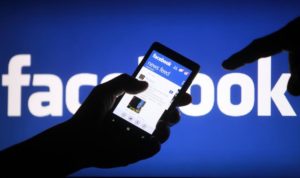 Though Facebook isn’t a leading source of information dissemination in a crisis, it is an important channel to communicate on if your organization has a strong Facebook following that will turn to your fan page for updates and to express themselves and communicate with you and others.
Though Facebook isn’t a leading source of information dissemination in a crisis, it is an important channel to communicate on if your organization has a strong Facebook following that will turn to your fan page for updates and to express themselves and communicate with you and others.
Facebook is always changing their algorithms which impacts the reach of your updates, so it’s good to stay as on top of these changes as possible (though not to depend on them). That said, here’s the latest changes that you may want to keep in mind and test out prior to experiencing a crisis.
Two new Facebook algorithm changes to bare in mind
1) Click-bait headlines
The more a link gets clicked on Facebook, the more likely it is to rank higher within users’ newsfeed and be shown to more people. Facebook is continually trying to ensure that the posts that rank high are posts that are truly valuable to its users, rather than spammy or annoying. One of their new algorithm changes is how they determine “click-bait headlines” (meaning headlines that are designed to get a lot of clicks, but don’t actually provide value to the user once they click through).
How are they doing this? By tracking the following:
- Facebook now tracks how long people spend away from Facebook after clicking on a link. The longer they spend away, the more Facebook assumes they’ve clicked through to an article that is providing them with value.
- Facebook will also look at the ratio of click-throughs compared to number of shares, likes and comments. If a post gets many clicks but few likes, comments and shares, this will indicate to Facebook that the link was not valuable to them – or at least not worthy of further discussion.
What does this mean for you?
- Caption your links appropriately to get the right kind of click throughs.
- Make sure that what you promise (which got you the click in the first place) meets the expectation of the user so that they stay and actually read through or watch whatever they’ve clicked to.
- Encourage shares and engagement.
2) Link-sharing prioritization
For those of you who tend to share links by uploading a photo and adding some text and the link to the post (see image below), you’d be wise to change your format.

Facebook will be prioritizing links that are shared through the link-format from now on, as these posts get more clicks and engagement.
How do you do this type of link-sharing?
When you post a link into your status update, it pulls an image contained within that link, adds caption from the linked page itself, as well as whatever caption you share to your Facebook post. This format of link sharing tends to get a much higher engagement rate (which is what you want anyway) because it provides viewers with more information into what they’re about to click through to. The image below is a good example of this.

What do these changes mean for your Facebook crisis communication?
When you communicate in a crisis you want your communications to be seen by as many members of your targeted audiences as possible. Understanding how Facebook evaluates and prioritizes posts will allow you to optimize your updates and communications for highest potential of views.
It’s all about relevance, value and engagement (those two-way communications I’m always talking about), both in a crisis and out. This is what you need to aim for – and not just on Facebook.

Author of Crisis Ready: Building an Invincible Brand in an Uncertain World, Melissa Agnes is a leading authority on crisis preparedness, reputation management, and brand protection. Agnes is a coveted keynote speaker, commentator, and advisor to some of today’s leading organizations faced with the greatest risks. Learn more about Melissa and her work here.

This further confirms my inclination to tell my audience that Facebook is NOT where they will find us communicating during a crisis. They can look to Twitter, texts, email, and automated phone calls.
Hi Delaina,
Just be clear about where they can turn for real-time updates, and make those updates easily accessible. But in all honesty, Facebook should not be your main social crisis communication platform. Facebook is good to use when you know you have people turning to that platform for updates and to communicate with the organization and one another. It's good when people go to your page on their own, not when you want your communications to be disseminated to the most amount of people, simply because newsfeed reach is not guaranteed. However, neither is Twitter's, since Twitter is so real-time, but the difference is that Twitter is easily searchable if you use the right hashtags. So many things to consider prior to experiencing a crisis!